The Legend of Zelda Tears of the Kingdom review: a Link to the recent past
Tears of the Kingdom builds upon everything Breath of the Wild delivered fantastically well, but does it hit the same heights?

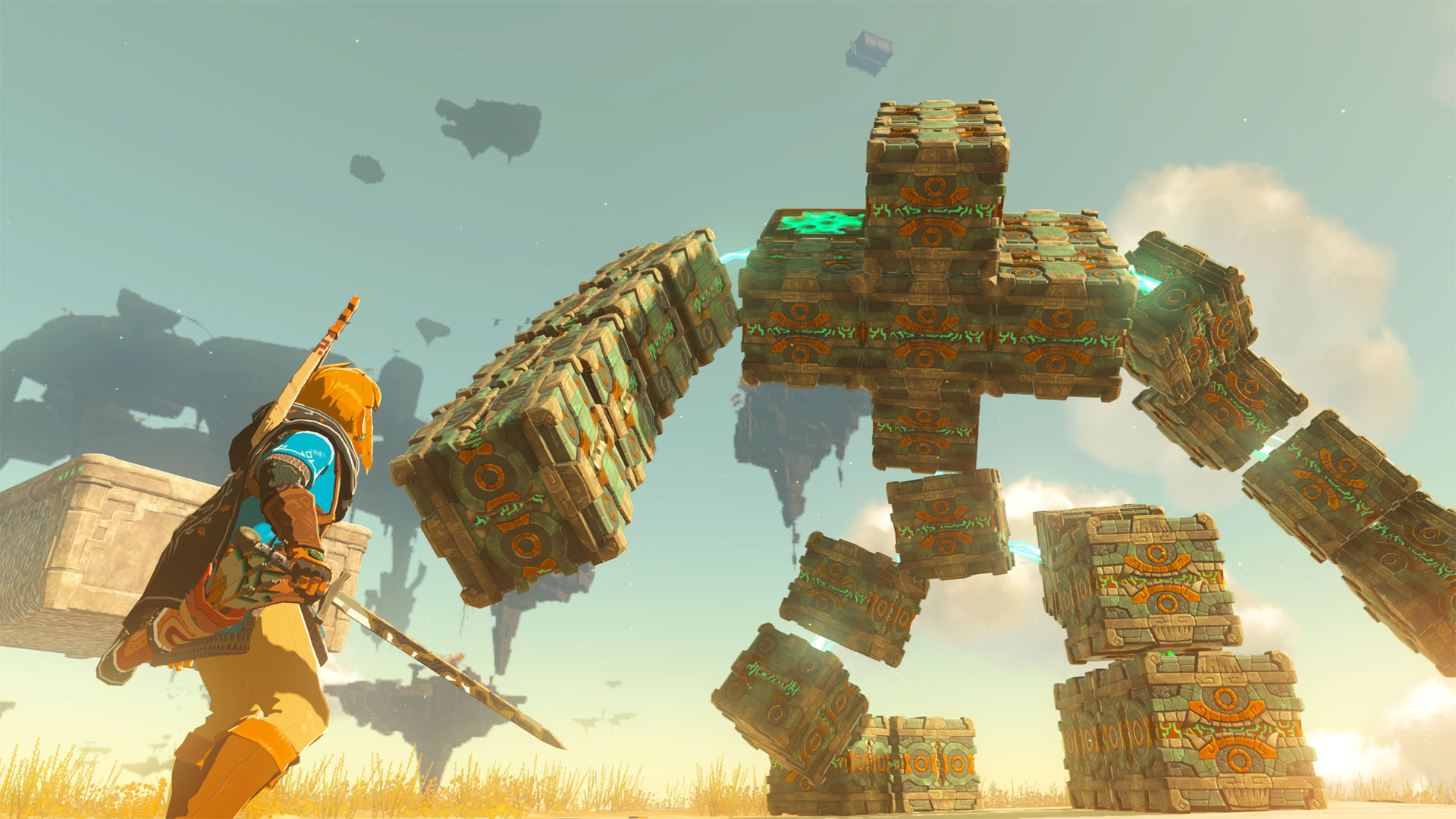
The Legend of Zelda: Tears of the Kingdom is more of a side-step than a giant leap forward for the series. Though the underground area is joyless to explore and the controls take some getting used to, the puzzles remain unrivalled with a sky full of creativity that only further proves why Hyrule remains one of the best open worlds to date.
-
+
A playground of puzzles and creativity
-
+
Exhilarating boss fights
-
+
Side-missions feel worthwhile
-
+
Still one of the best open worlds
-
-
Cumbersome controls need a lot of practice
-
-
The depths are not fun to explore
-
-
New powers are hit or miss
Why you can trust T3

It's dark. So dark I can't see anything mere steps in front of Link. One wrong move and I'll plunge thousands of feet to my untimely death... again. The clouds are thick, the wind is unrelenting, the lightning is ferocious, and yet I know there's something in the eye of this storm. That something will take me from sky to land to the depths of Hyrule on an unprompted four-hour side adventure that will engross me the entire time. This is The Legend of Zelda: Tears of the Kingdom.
Breath of the Wild rewrote the handbook on what an open-world video game could be. A game that defined the Nintendo Switch from day one, inspiring countless titles and pushing the Zelda series to new heights like never before. So when Nintendo made the improbable decision to make a direct sequel, Tears of the Kingdom, the anticipation couldn’t have been higher. Could any game ever meet that expectation?
With six years in development (the longest time ever between mainline Zelda games), there's definitely not a straightforward answer. If anything it's a loaded one that I believe will be a major point of debate for decades to come among fans. Even if Tears of the Kingdom's new innovations and return to the same land that many of us poured months into exploring doesn't quite have the same 'wow' factor its predecessor did, it's still a fantastic game in its own right.
Tears of the Kingdom review: Price & Release Date
- What is it? An open-world action-adventure Zelda that acts as a sequel to Breath of the Wild
- Release date? May 12, 2023
- What platforms can I play it on? Nintendo Switch
- Price? $69.99 / £59.99 / $AU89.95
Tears of the Kingdom review: What is it?
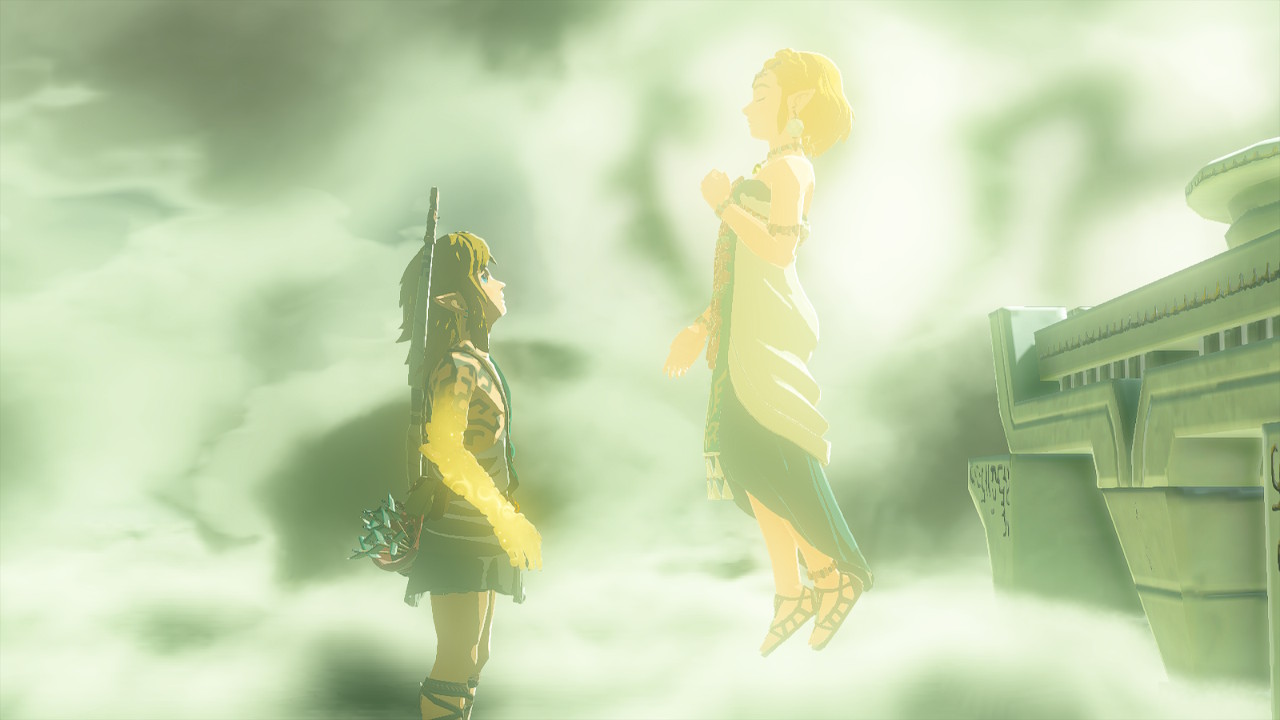
Set a number of years after the demise of Ganon at the end of Breath of the Wild, Tears of the Kingdom starts with Princess Zelda accompanied by her swordsman, Link, investigating an ominous Gloom that has been seeping out underneath Hyrule Castle. Upon locating a skeleton that resembles the Demon King, all hell breaks loose with Zelda disappearing into a chasm, Link losing his right arm, and the Master Sword being destroyed. Nothing out of the ordinary then.
Waking up on the Great Sky Island in the heavens above Hyrule, Link – now possessing a magically infused arm – must piece together what has happened to the princess and the ramifications of Ganon's imminent return. Following a lengthy but necessary tutorial that introduces Link to his new powers, you return to the surface and set up base at Lookout Landing before hearing reports of four major phenomena around Hyrule.
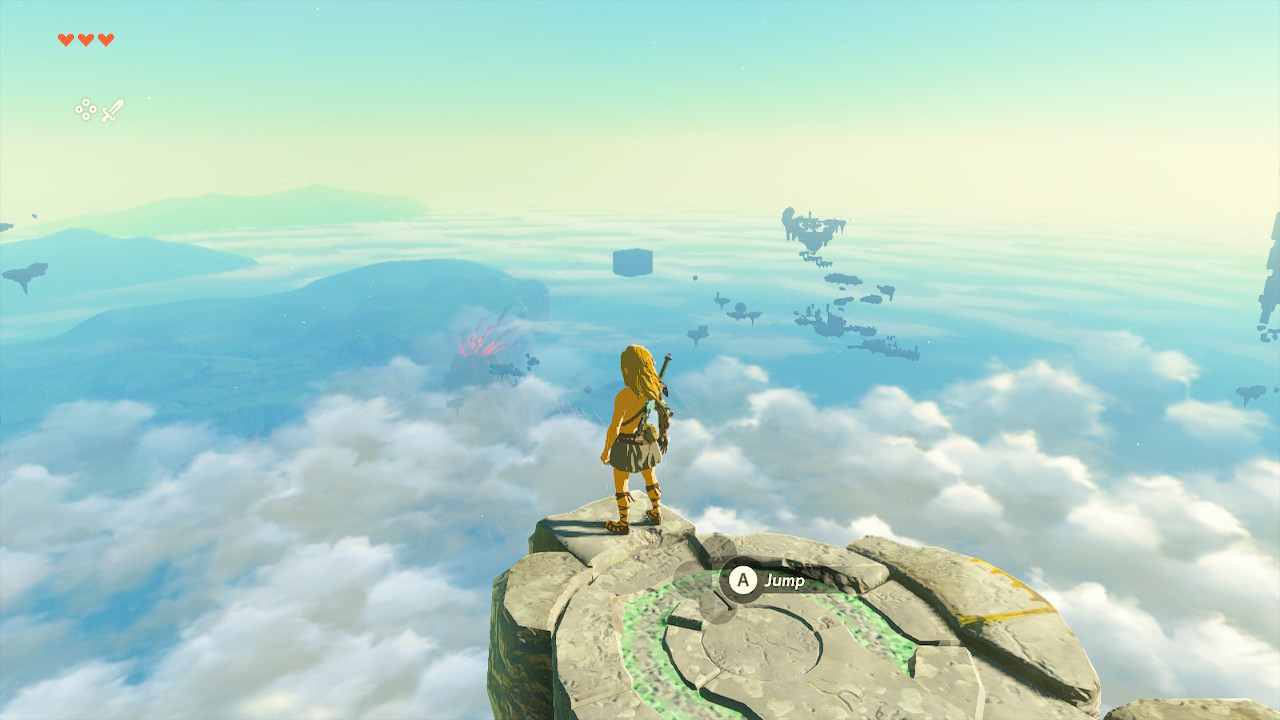
Anyone who played Breath of the Wild (29 million people and counting) will immediately be familiar with Tears of the Kingdom. This is the same Hyrule, now expanded to incorporate the sky and the underground (known as the Depths). These are the same hills. You visit the same four areas – Hebra, Eldin, Gerudo and Lanayru. Weapons still break. The Blood Moon regularly rises and sets every few days. There are over 100 new Shrines to find and a bazillion Korok Seeds to collect. Skyview Towers (Sheikah Towers) are used to reveal the map. Memories tell the bulk of the story. Zelda isn't playable. And the constant rain makes me want to hurl my Switch out the window!
Instead of coming across a group of Bokoblins cooking a slab of meat, they might now be riding a massive Stone Talon rock beast or be hoisted in the air by a flying Aerocuda. It's intriguing. I can't remember an open world like this that has been given the chance to age naturally. There is an air of disappointment, however, as the majority of play is spent on the surface and not the highly anticipated Sky and unknown Depths. Equally, there's nothing nearly as exhilarating as coming across a Guardian for the first time – and that includes taking on a three-headed dragon.
Get all the latest news, reviews, deals and buying guides on gorgeous tech, home and active products from the T3 experts

Zelda games are rarely remembered for their stories and it's unlikely Tears of the Kingdom will be any different. This is certainly a step up, though, and did make me recoil in shock at one key moment – but still, it's the journey, not the destination, that takes precedence. If anything, it's the characters that shine through best. Pretty much every face met in Breath of the Wild returns in some form, providing an interesting dynamic to how their relationships with Link have grown over time.
Take Purah, for example, the 124-year-old scientist who previously took the form of a young girl. Now she is back in adult form and heading up research on all ancient technology. This growth helps to create a living, breathing world. I just wish this applied to everyone, as several times Link has to reintroduce himself to people already met in the past game, taking me out of it. It felt very pick and choose.
Tears of the Kingdom review: How does it play?
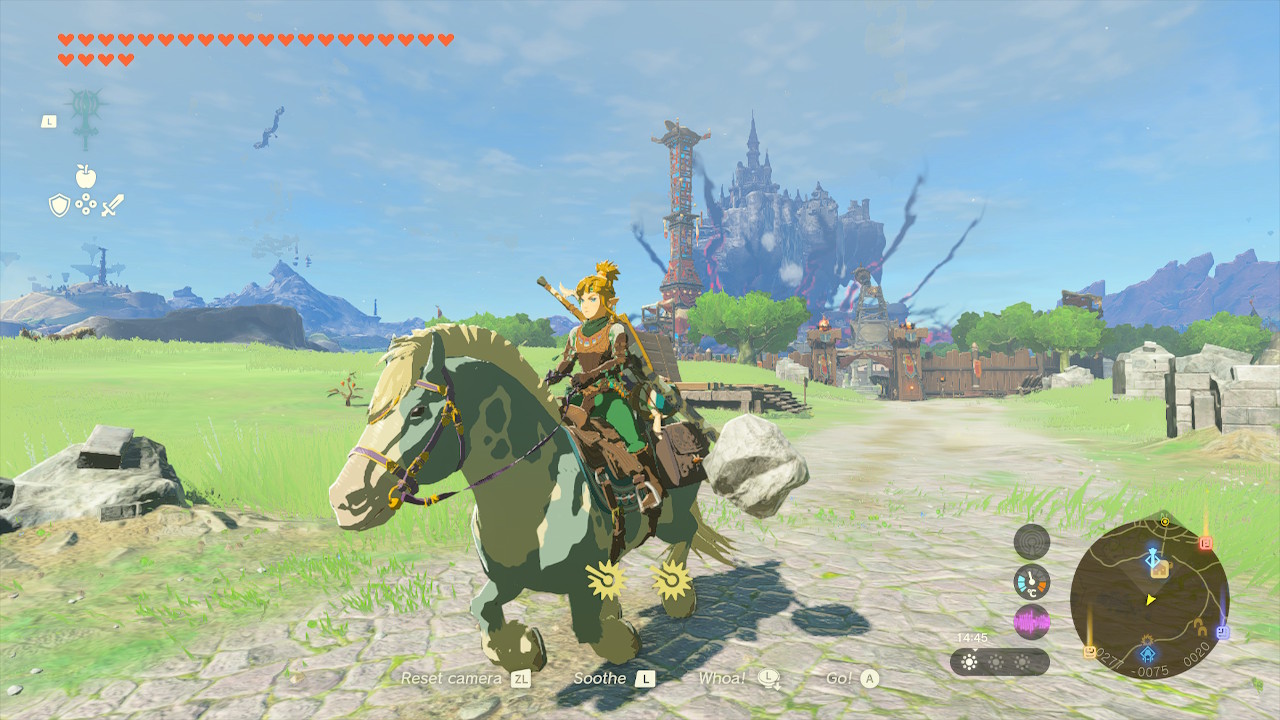
Tears of the Kingdom plays near-identically to Breath of the Wild. You run. You jump. You climb. It's all about exploring the massive open world in search of Shrines to collect Light of Blessings (this game's version of Spirit Orbs). Collecting four of these will allow Link to increase his number of Hearts or Stamina. Weapon degradation, a point of contention for some people, is back too – though I never found it a hindrance. The two significant differences this time around are the new powers and Zonai Devices.
Ultrahand is the first new creative power, enabling Link to grab and move objects as well as rotate and stick them to objects. Bundles of wood, wheels, and more, are all scattered across Hyrule for you to create cars, hovercraft, flying machines and whatever else your imagination can concoct.
Fuse is the second creative power, which lets you equip pretty much anything to a sword, shield or bow and arrow to enhance it – a must now that all of the weapons in the land have corroded. Attaching a monster eye to your arrow tip so it locks on when fired is pure magic, it just can feel a bit busywork having to constantly attach upgrades to level-downed swords.
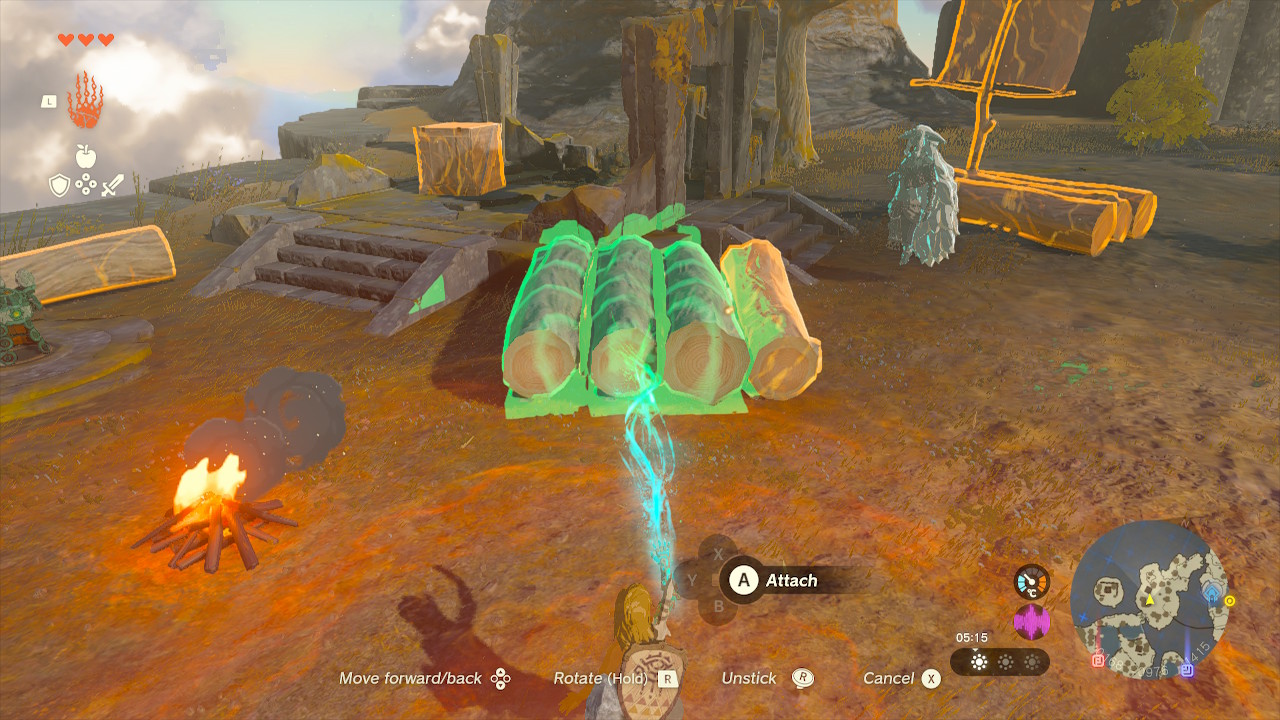
A big part of all of this is the Zonai, a race of creatures that helped found Hyrule and feature in both the Sky and Depths. These adorable mechanical creatures introduce Zonai devices: materials that can be used to craft vehicles and weapons, including fans, rockets, balloons, wheels, steering sticks and over a dozen more contraptions. These are found in bubblegum-like dispensaries that can be exchanged for the plentiful Zonai Charges, which are found among the map.
Combining these two powers and Zonai Devices is where a lot of the new puzzles and traversal are born from, such as building a minecart to get across a set of rails or creating a souped-up mechanical bird with 10 rockets to shoot across the stratosphere. It's impressive, but I often avoided using them when travelling due to how slow building is, in favour of just using a horse or paragliding. It wasn't until 30 hours in when I unlocked the third creative power, Autobuild, which instantly recreates your Ultrahand projects, that I felt the benefit.
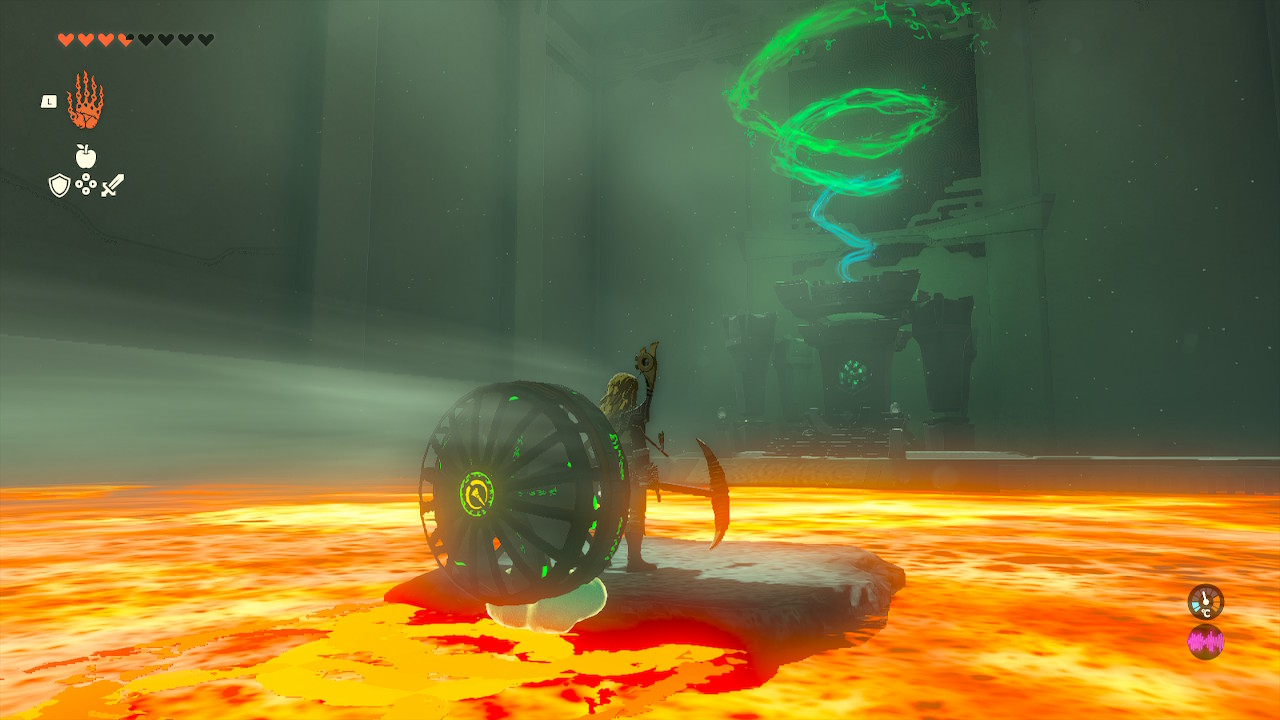
The remaining two powers are Ascend and Recall. The former lets Link move upwards through solid material and emerge on top of it, while the latter makes it so any object's movement can be reversed. Essentially, you can jump through a ceiling and reverse time momentarily. Recall is the star of the show, utilised to perfection in puzzles. Some real "aha" moments occur on a regular basis. Just stepping on a fallen boulder and reversing it back into the sky is something special to behold. Ascend is equally inventive, just a little limiting. You'd think you would be able to zoom up to the top of a mountain but that's rarely the case.
One of my biggest Tears of the Kingdom gripes is the controls though. Not until a dozen hours in did I feel like I had everything down, and still I regularly selected the wrong command from time to time. This stemmed from the unintuitive building powers that never quite angle right and the constant need to jump in and out of menus to pick the right attachment for my sword or the right arrowhead for my bow. I avoided using the Switch in handheld more so because of how fiddly it is.
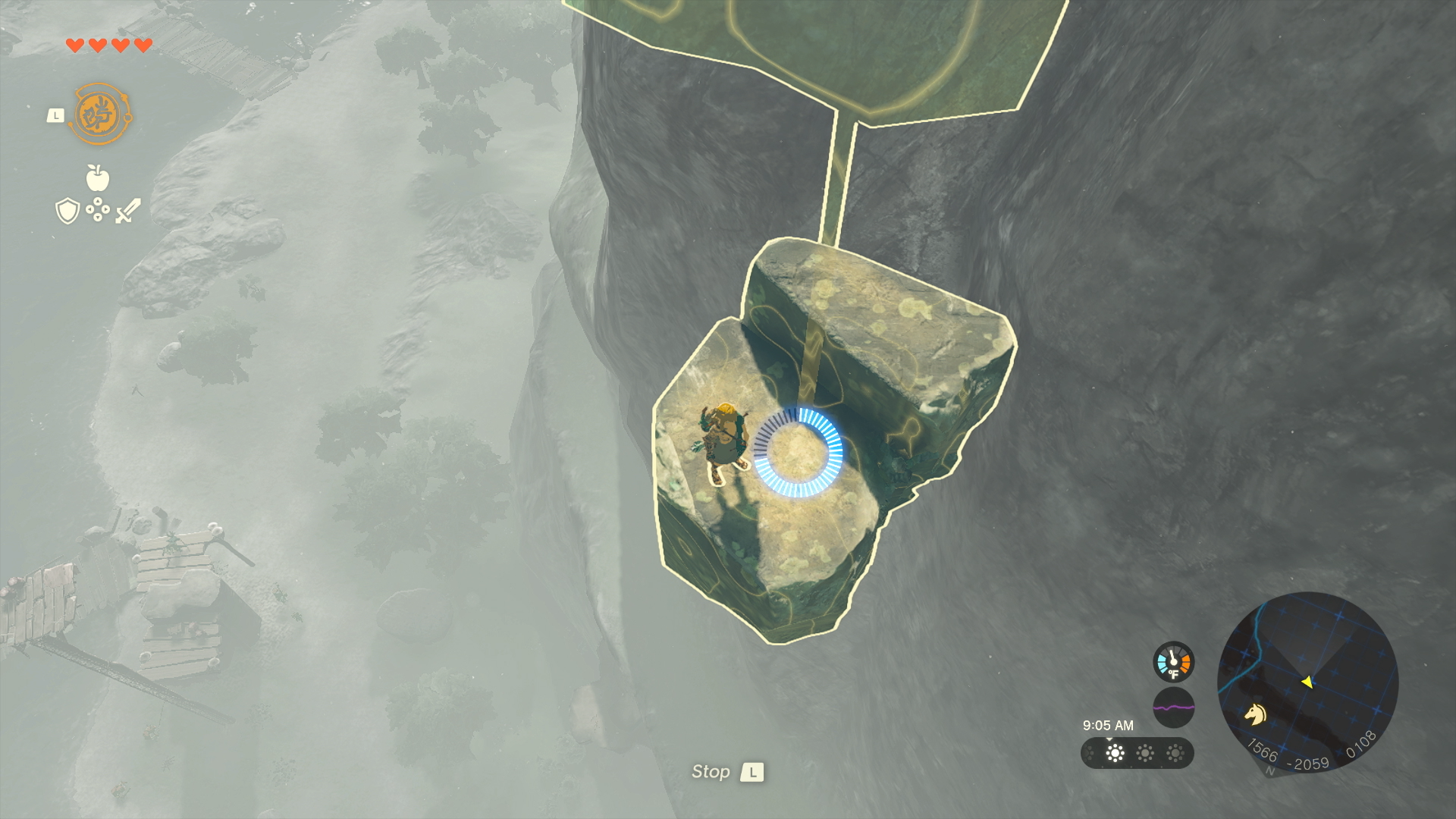
The three different layers of Hyrule are distinctly different. Although the most barren, the Sky offers that same whimsy that I found when wondering "what's over that mountain" in 2017. Aside from the Great Sky Island, there aren't too many interconnected islands to explore: think a few islands here and there with the odd huge island offering a surprise. They do also prove pivotal in two of the main temples. What's there is great, I just wanted more. Loftwing creatures to ride would have been a nice addition too.
On the other hand, the mysterious (and enormous) Depths that have been kept out of all marketing before release is the biggest disappointment in Tears of the Kingdom. Found by diving through one of the many chasms that have opened up across Hyrule, this pitch-blank environment is a chore to make your way through. To see anything you need to constantly light Brightbloom Seeds until coming across a Lightroot, a plant that will brighten up nearby surroundings. It felt tedious and lacked anything of real substance to add to the game. It makes the Silent Realm in Skyward Sword look like the Snowpeak Ruins from Twilight Princess (real ones know).

But just like Breath of the Wild, the brilliance of Tears of the Kingdom is the Shrines and how you can attempt puzzles in any way you see fit. If you can think of it, Nintendo has made it possible. Can't figure out how to get over a gap? Just create a huge bridge made out of weapons, cooking pots and batteries. I did. One Shrine had me jumping and crouching over lasers Mission Impossible-style, while another had me relying on buoyancy physics to make a ball take out a plank of wood that was blocking the path forward. The variety never gets old.
The bad news concerning the new dungeons of this game is that these are not the full-blown two-to-three-hour puzzle extravaganzas that the Zelda titles of old featured – and that many of us, including me, were hoping for. Taking close to an hour to complete, Temples definitely create some memorable moments and are certainly an improvement on the Divine Beasts. The Water Temple, specifically, uses its element to a great extent, having Link float about in water spheres to reach new platforms. It's just nowhere near the peak of what this series has done.
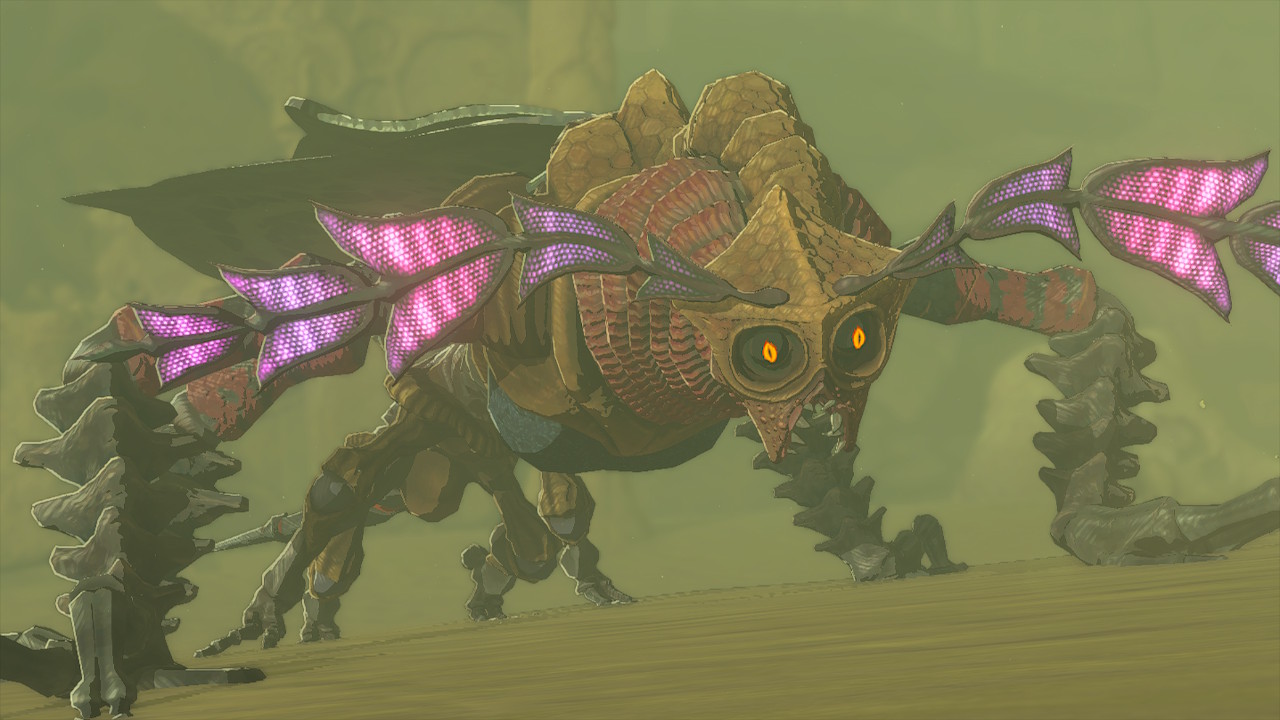
Having said that, I adore the boss fights that come at the tail-end of Temples. Without giving away too much, one sees Link stuck in the middle of a hurricane and the need to divebomb through the enemy's core in hopes of defeating it. The satisfaction was euphoric every time I paraglided back up, only to immediately plummet back down for another hit. This is Zelda at its very best.
Side-missions are plentiful. The wonder of talking to some random civilian before being dragged on an unknown quest for a good couple of hours that not only wields a decent reward but also enriches part of the world is exactly what video games like this are made for. Only Elden Ring in recent times echoed this sense of discovery. One minute you're investigating a prophecy-speaking Cucco, the next your putting your body temperature on the line in a test of endurance against a wily old man. Whatever the case, there are true highlights.
Tears of the Kingdom review: How does it look and sound?

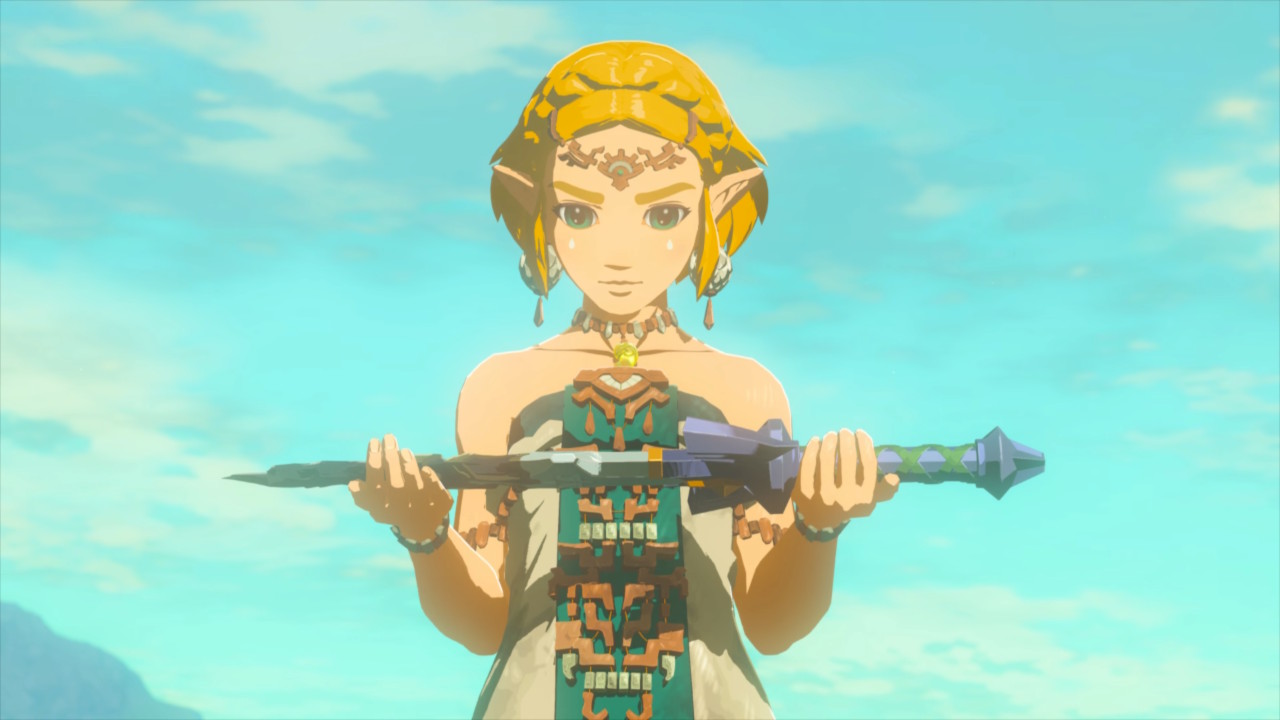
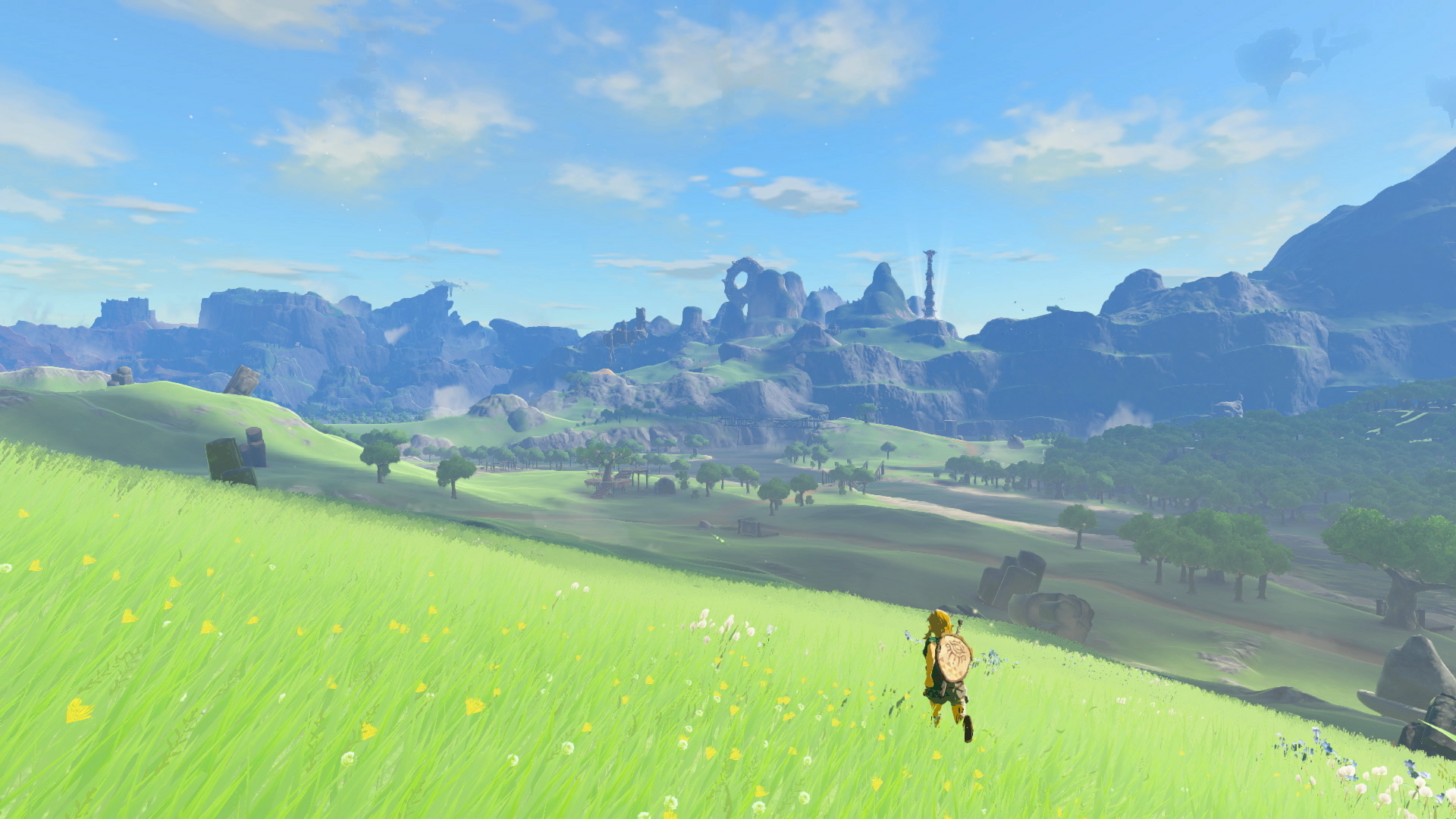
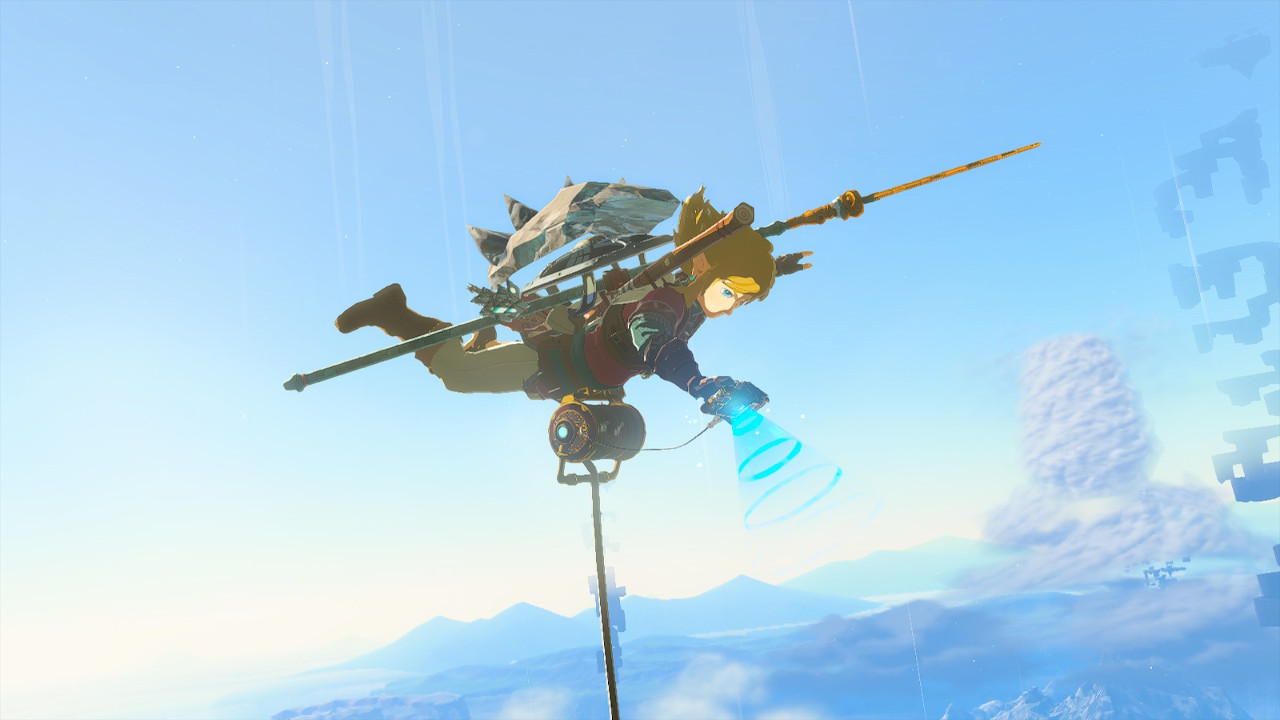
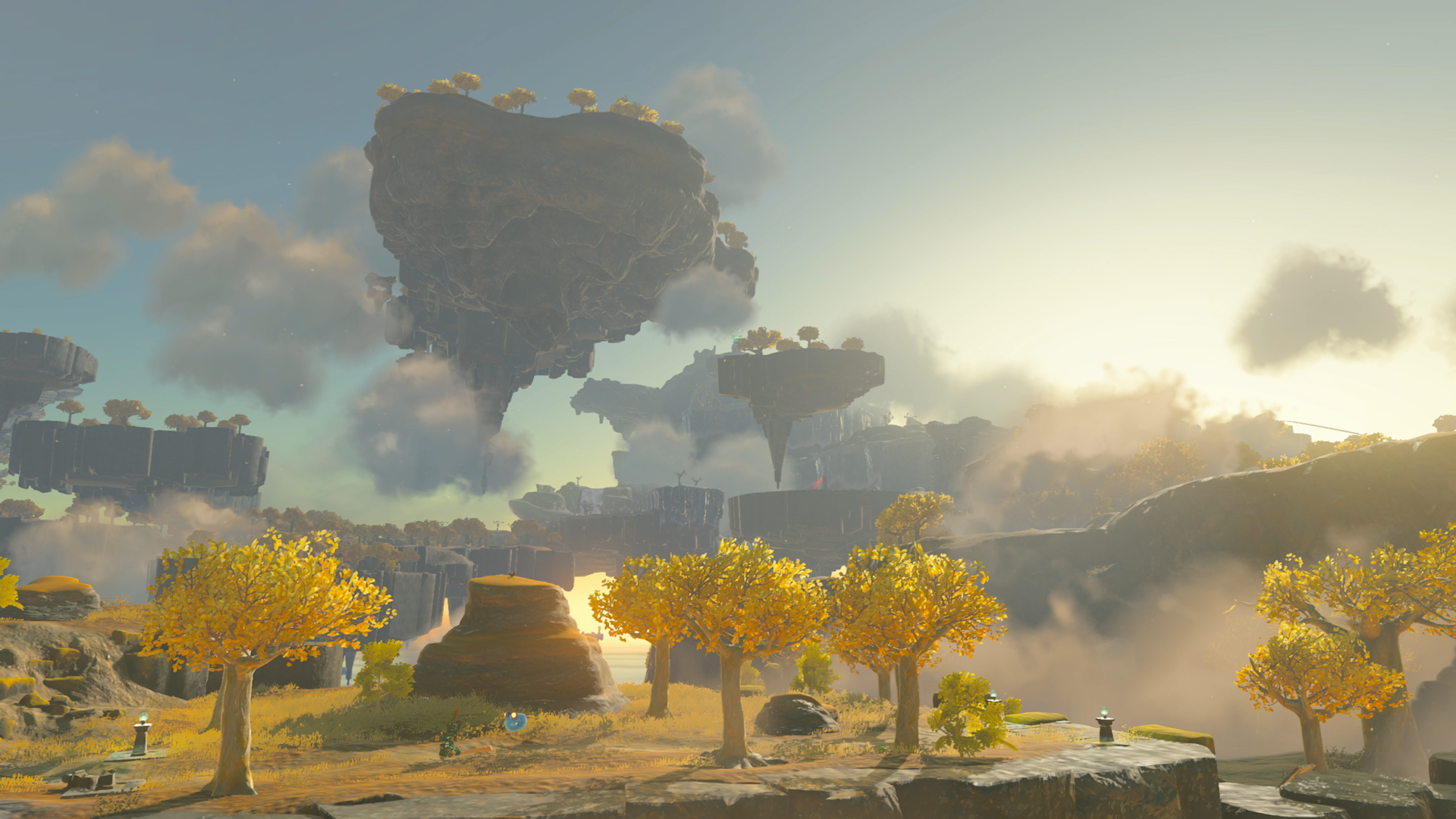
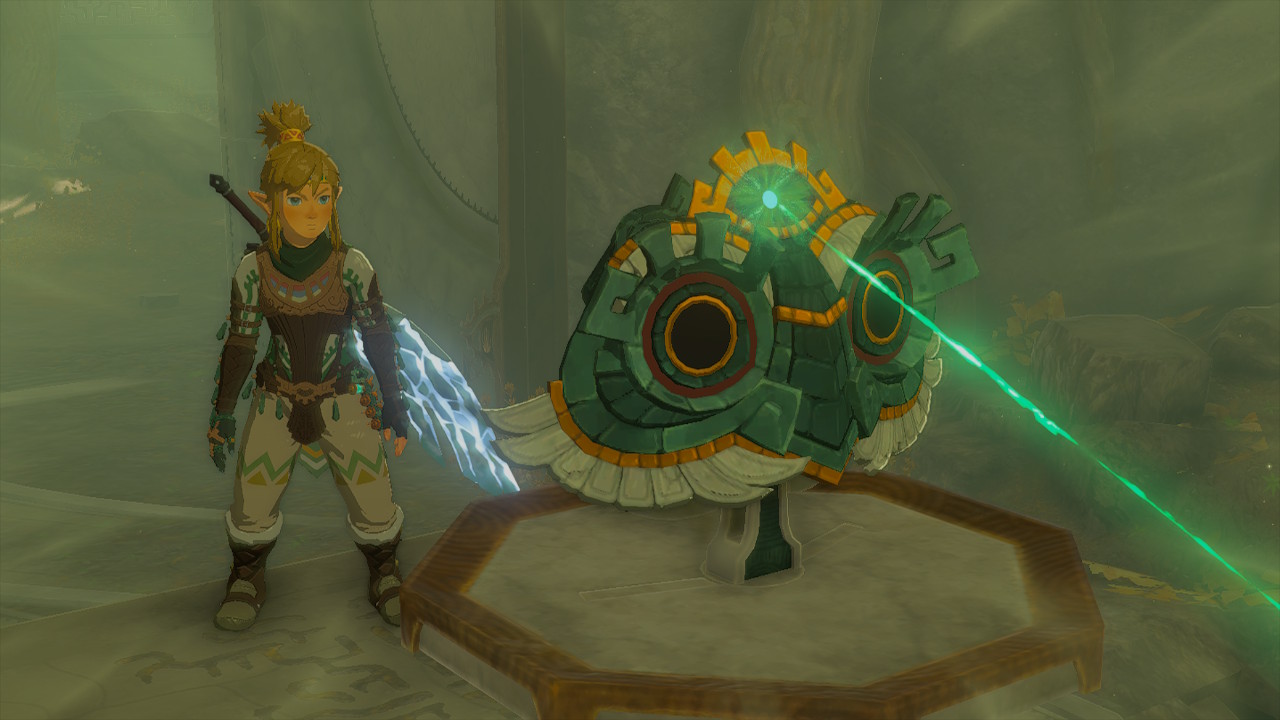

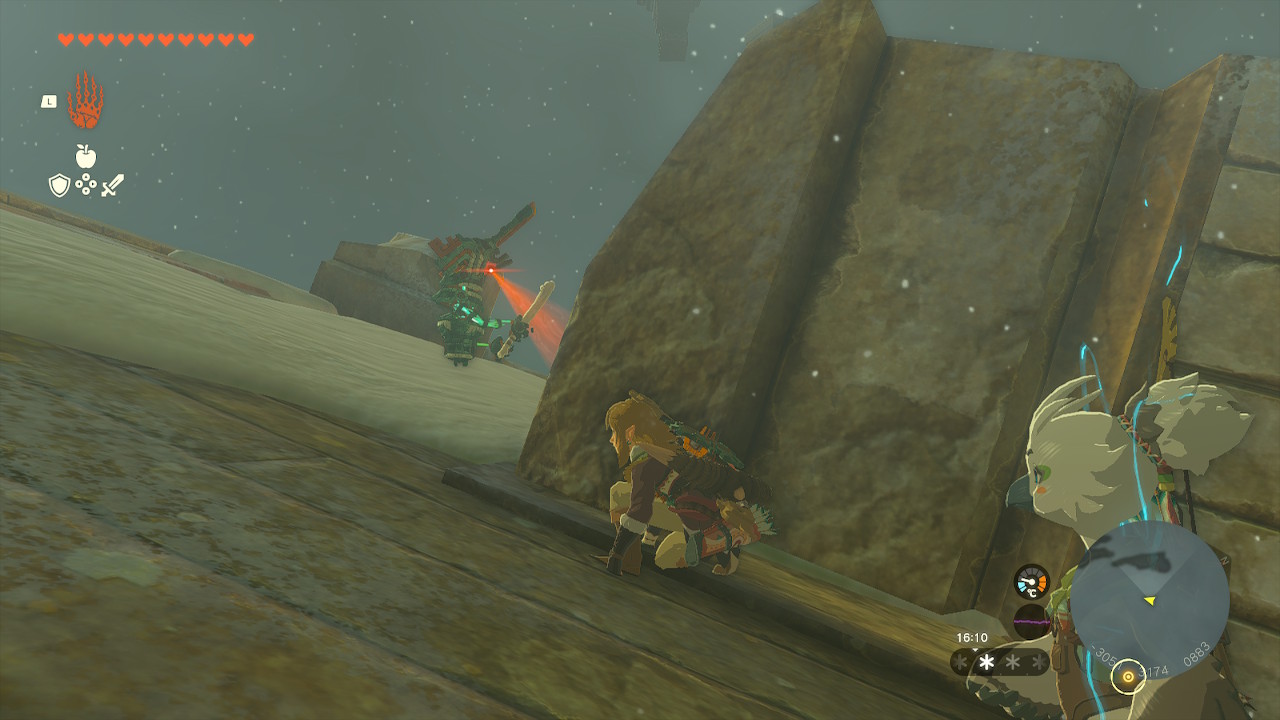
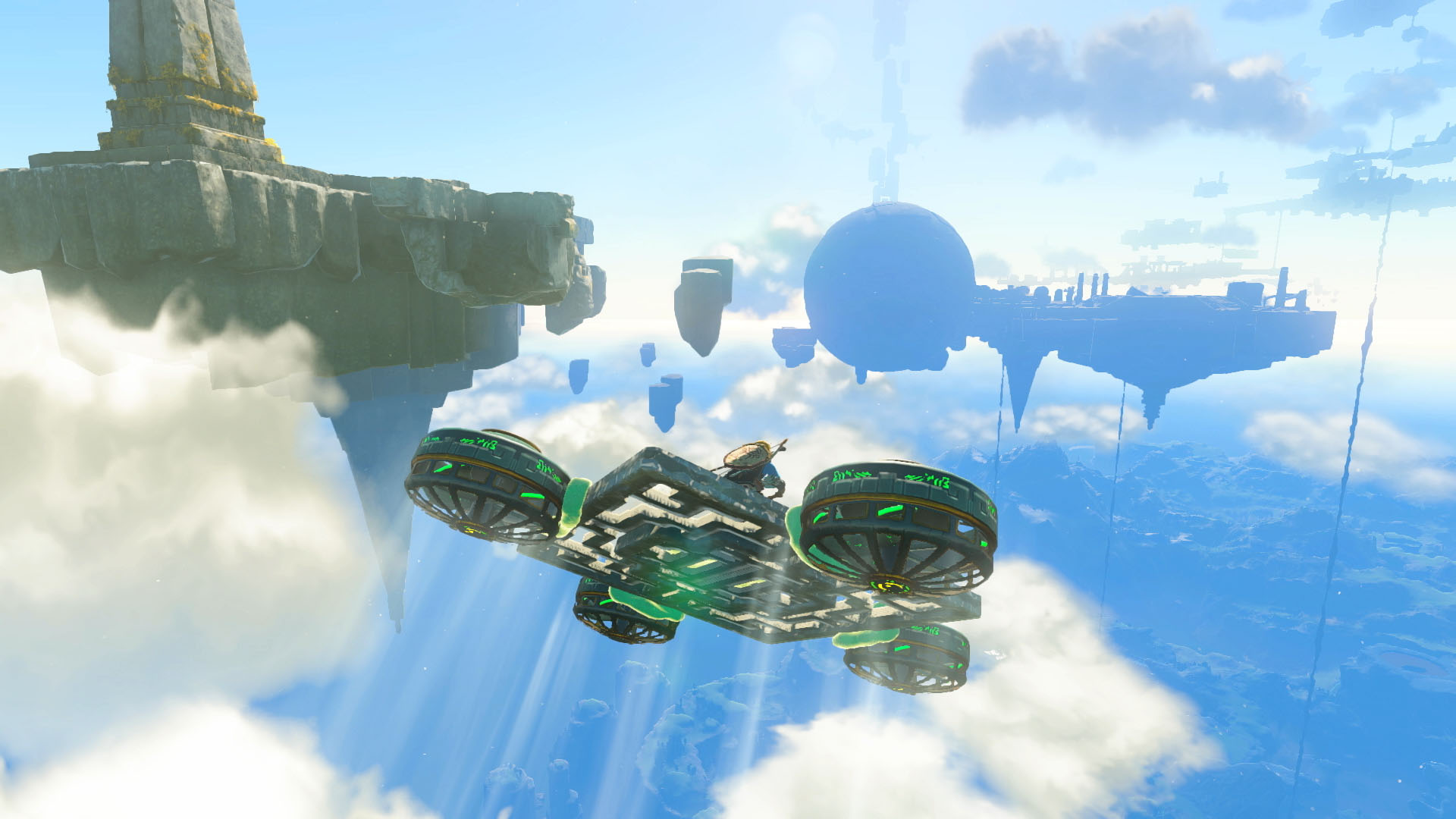
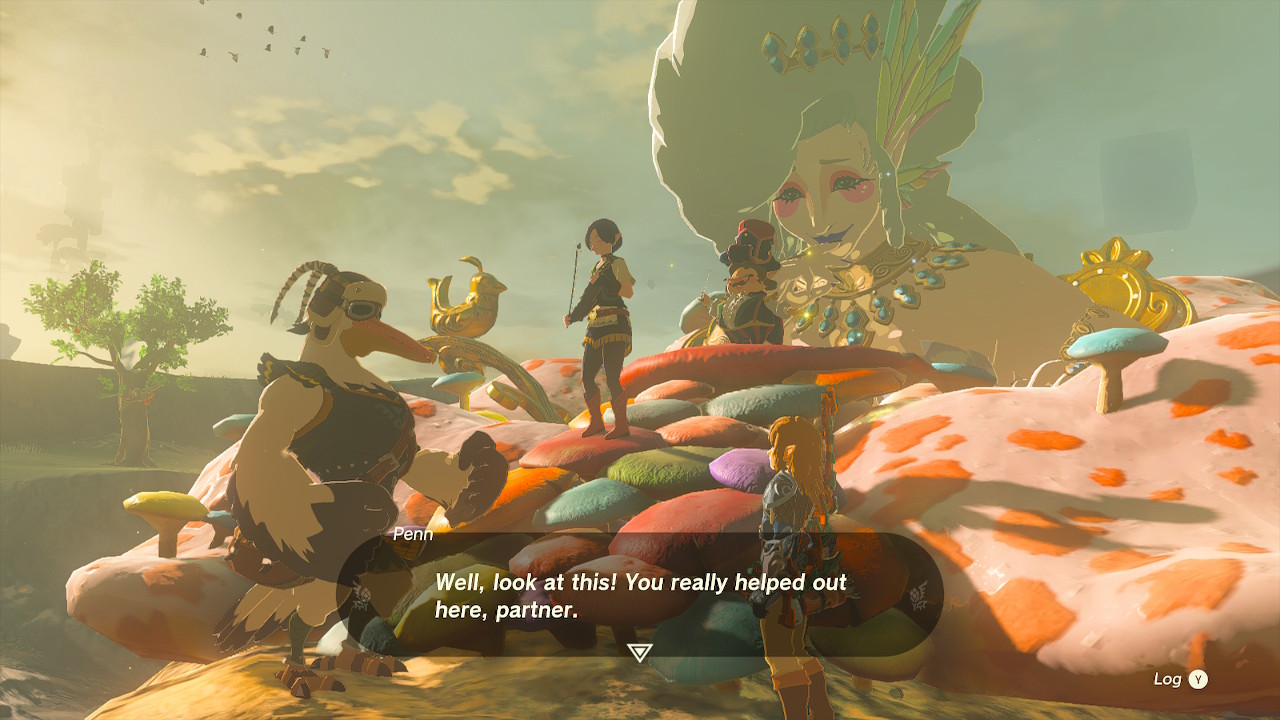
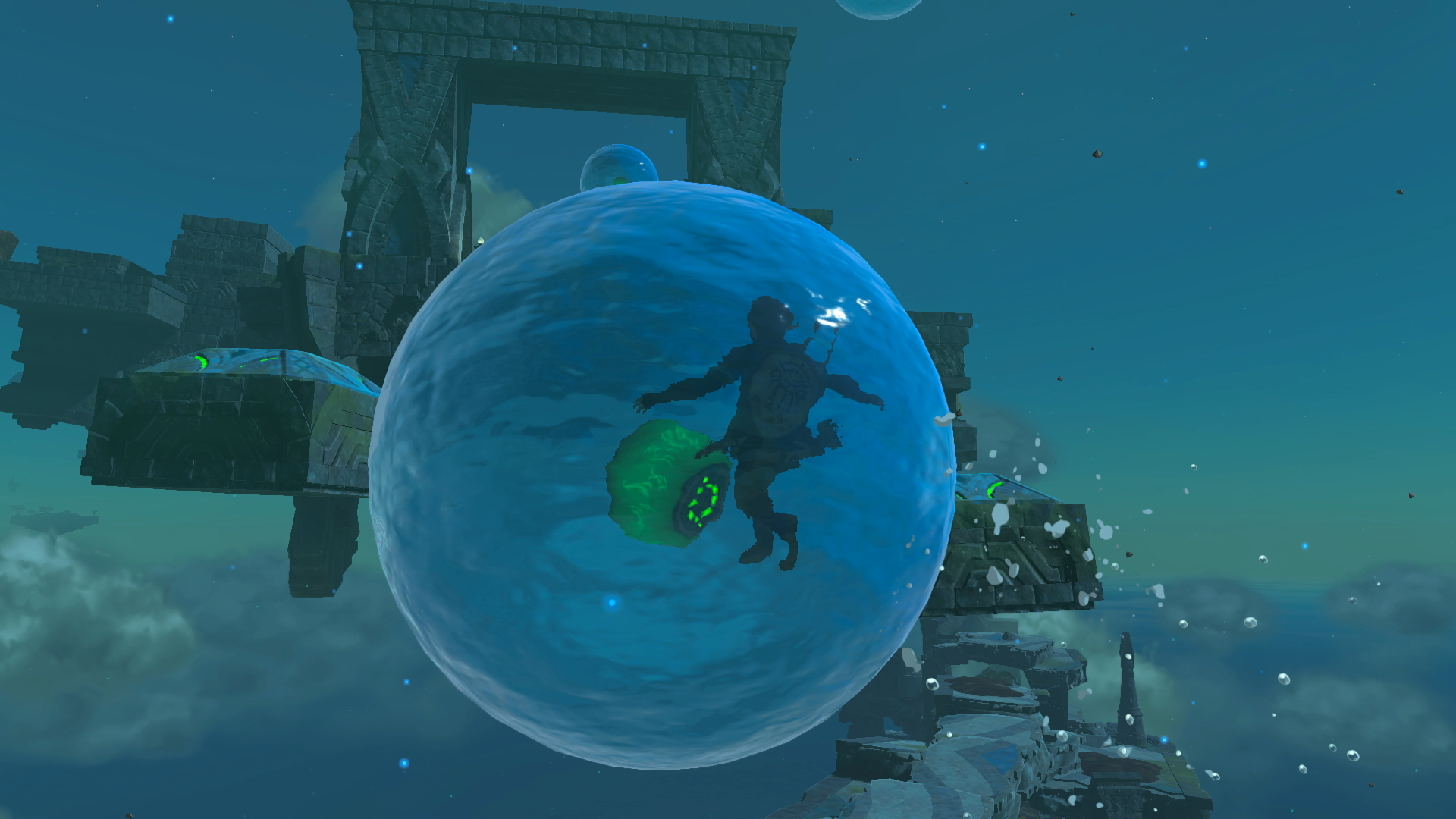
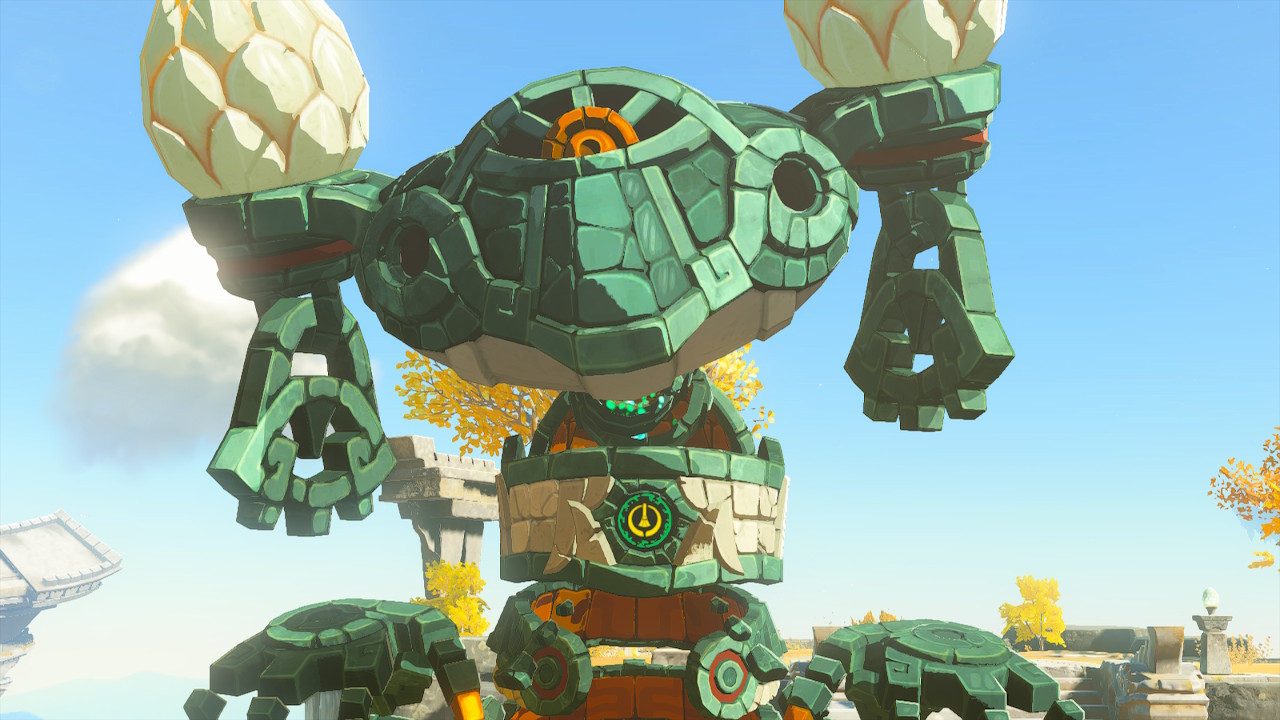
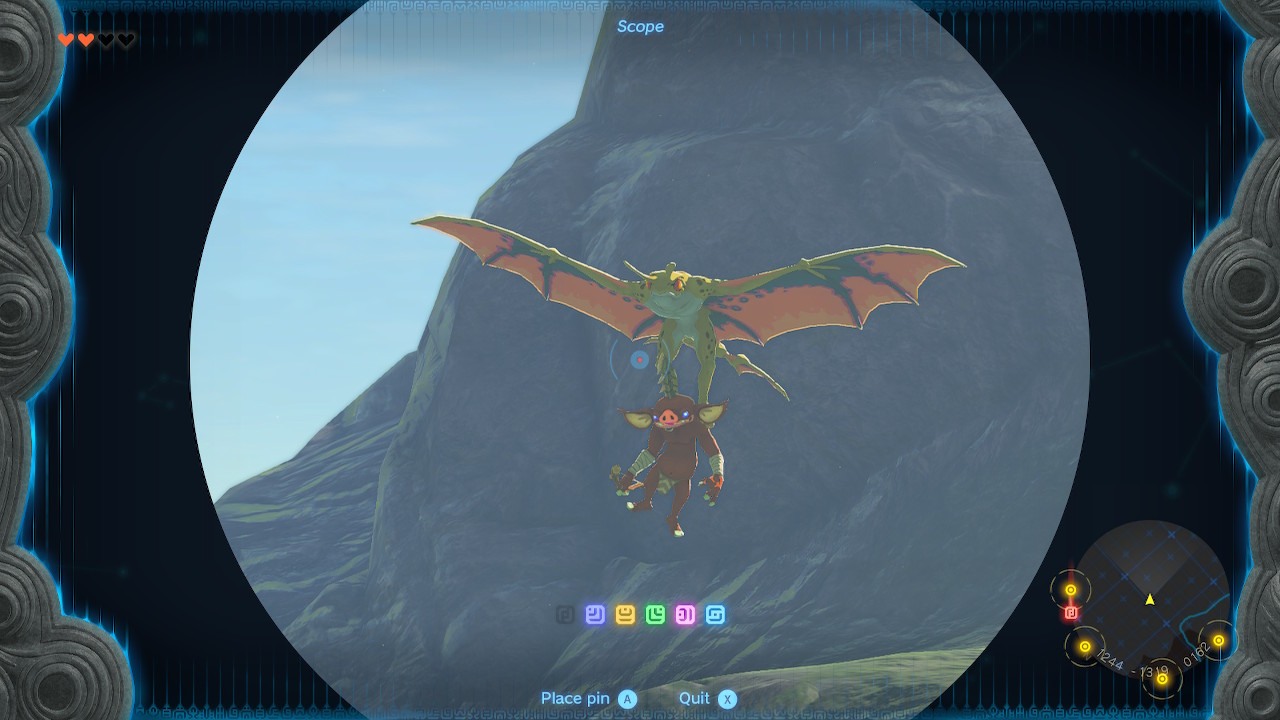
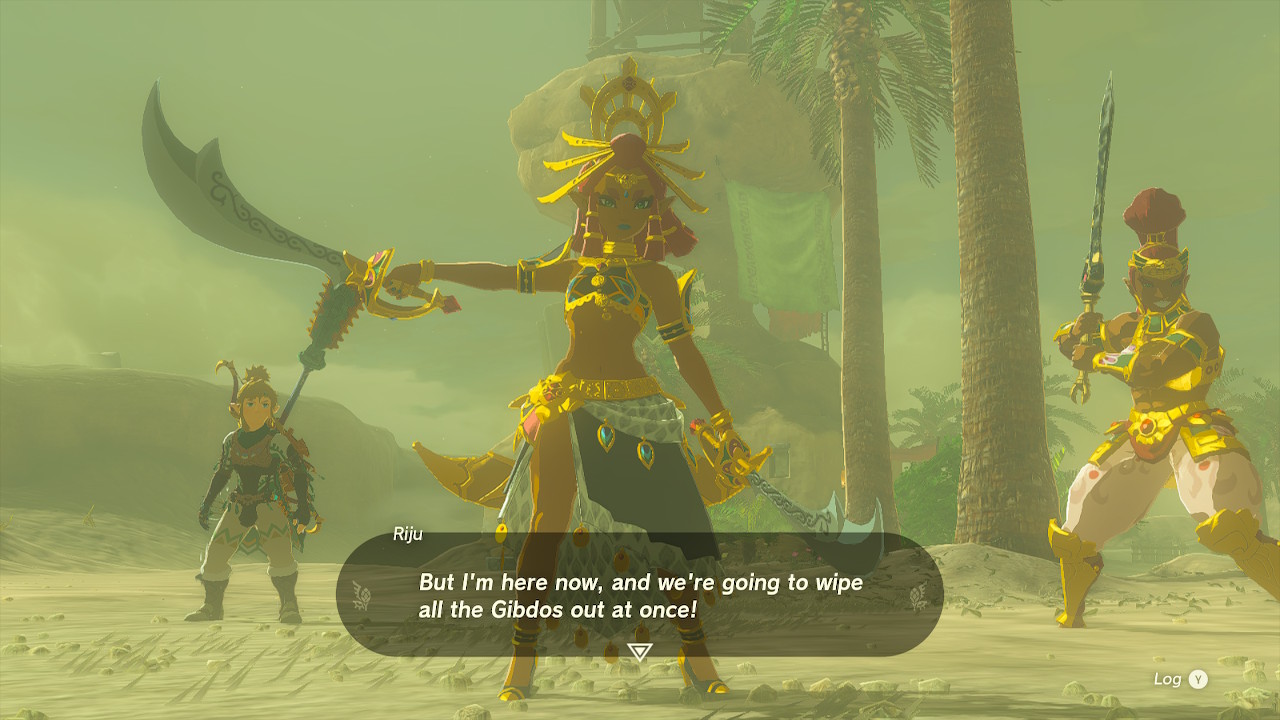
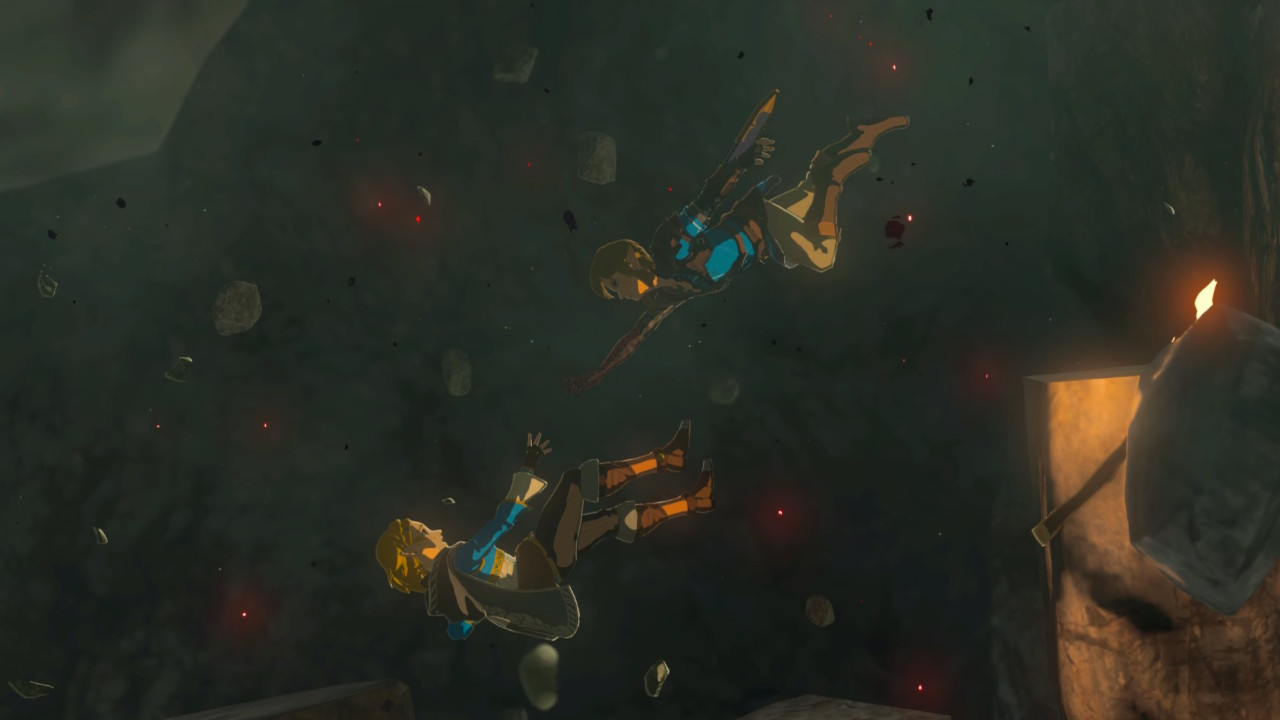
Let's quickly talk about the tech. This is six-year-old hardware now and the Nintendo Switch is beginning to show. At a targeted 30fps, Tears of the Kingdom does suffer when multiple characters are on screen. Most notably in the Depths and Fire Temple, I found quite a bit of resistance from the ageing hardware. Pop-in is definitely a thing too. As someone that can overlook this sort of thing usually, I'd be lying if I said it didn't become distracting to my experience at times. Maybe it is time for the Switch Pro after all.
From the highest highs in the sky to the lowest lows in the Depths, the cel-shading of Tears of the Kingdom is gorgeous. Sunsets glimmer and shine superbly on the Nintendo Switch OLED, while the wealth of colour on display is magnificent. Looking out over the vista above the clouds is an amazing thing to behold. The hardware might be getting on a bit but the art style is near-timeless. This is a game designed to be blown up on a big TV.
Like any Zelda, one of the biggest strengths in Tears of the Kingdom is the music. The main theme alone is superb, only enhancing the rush of falling through the air. The melancholy piano-driven tunes of Breath of the Wild drive a lot of the open-world environments and while not a bad thing, something rearranged or different could have freshened things up further. The Sky utilises a mix of strings and piano to great effect teasing what's within the next set of clouds. Horns blare like an enraged elephant when entering the Depths, giving off the unnerving feeling of being somewhere you shouldn't be. It's chilling to the bone!
Voice acting is another aspect that has expanded. Now many of Hyrule's main cast of characters have a voice for the first time – and for the better. Cutscenes don't feel rare, now happening frequently. It's another step in the right direction with Patricia Summersett as Zelda and James D. Mortellaro as Prince Sidon being the standouts.
Tears of the Kingdom: How long to beat?
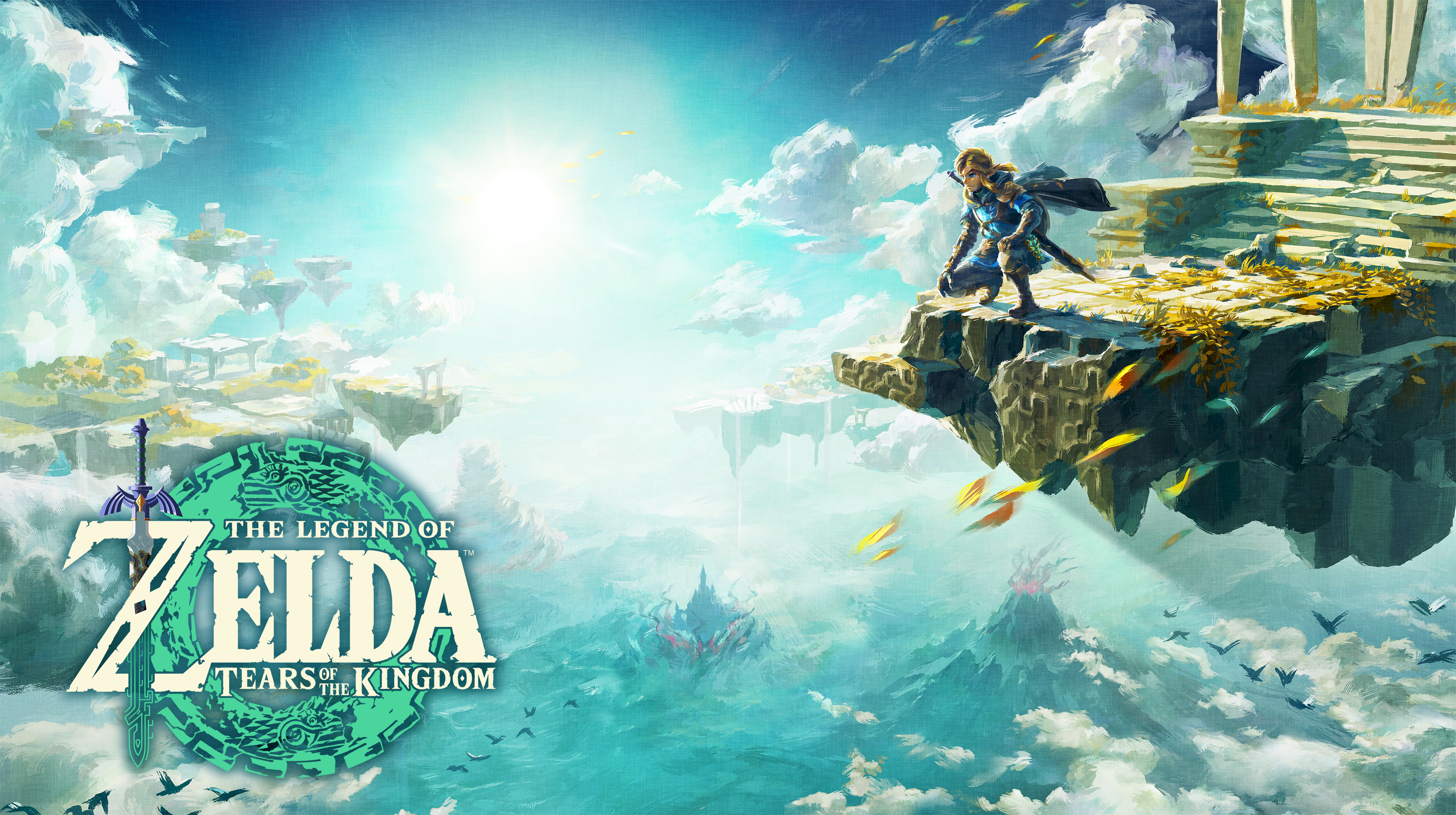
By the time I rolled credits on Tears of the Kingdom, I'd spent approximately 70 hours in the land of Hyrule over a two-week period. This was done by focusing predominantly on Main Quest missions in addition to dabbling with a variety of Side Adventures and Side Quests. My Shrine count equalled 90 but I wouldn't be surprised if there's double that in total. There's easily 100-plus hours of gameplay to be had here.
I'd recommend playing Breath of the Wild beforehand as all of the events, characters and world in Tears of the Kingdom build off the original. If not, Nintendo has uploaded a Breath of the Wild recap that's worth watching to get caught up.
Verdict
The Legend of Zelda: Tears of the Kingdom is more of an advancement of Breath of the Wild, not an overhaul or revolution. This may still be set in the same world of Hyrule, but its playground of puzzles and creativity is tough to beat, with exhilarating boss fights and worthwhile side-missions making it a joy to behold. While the controls take some getting used to and the Depths feel a chore to explore, the Sky islands help make one of the best open worlds in a video game even better.
Also recommend
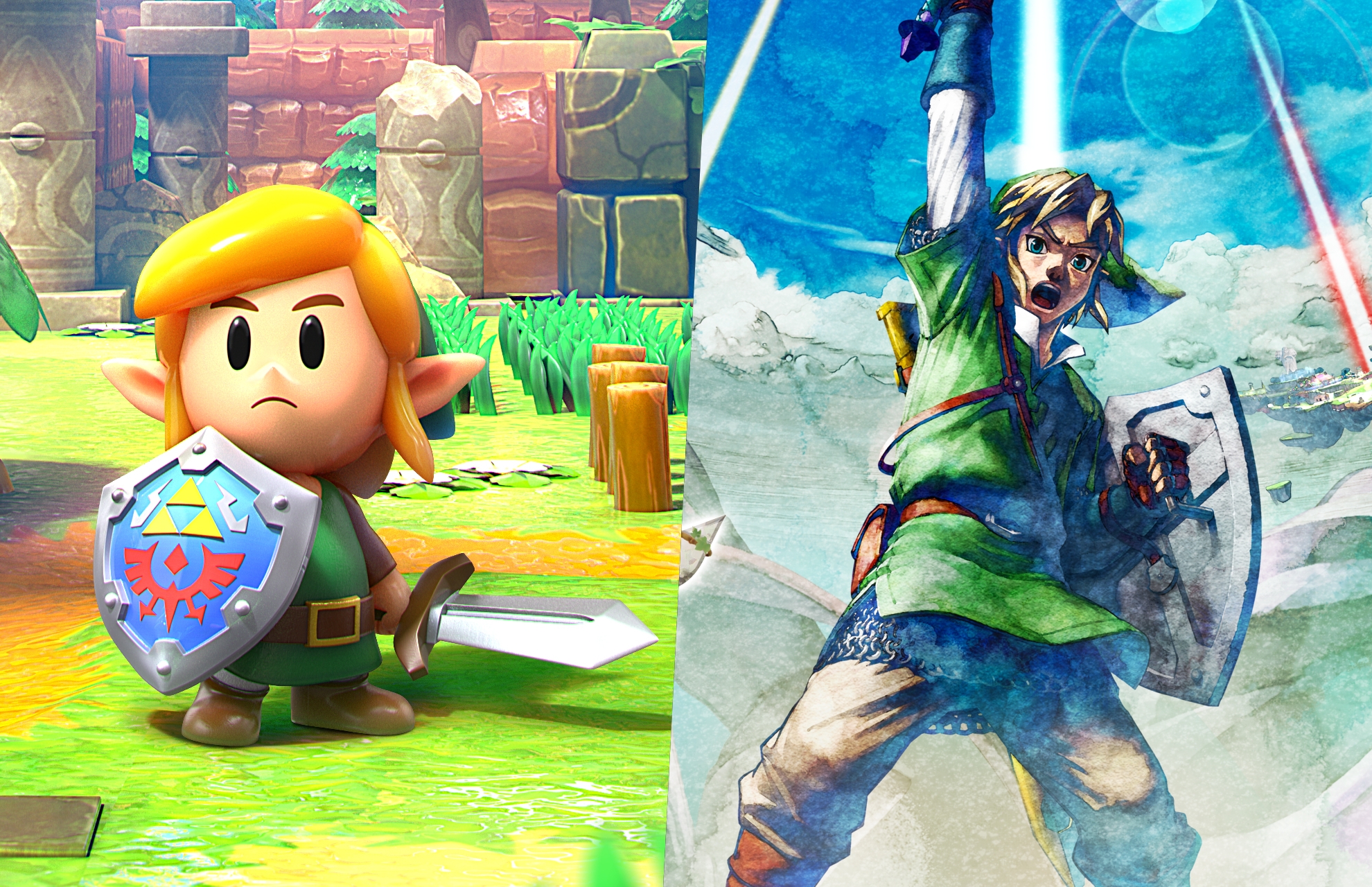
One of the best reasons to own a Nintendo Switch is the sheer number of Zelda titles. While Breath of the Wild is a must-play for anyone looking to play Tears of the Kingdom, the console also has the wonderful top-down 2D adventure, Link's Awakening, reimagined in a gorgeous new art style for a modern age. Anyone looking for a more traditional linear Zelda adventure with long sprawling dungeons to get lost in for hours on end should give Skyward Sword HD a go. Not only does it give further context to the origin of the Master Sword but it's the catalyst for skydiving and the sky islands in Tears of the Kingdom.

Matt is a freelance writer for T3, covering news and keeping up with everything games, entertainment, and all manner of tech. You can find his work across numerous sites across the web, including TechRadar, IGN, GamesRadar, Tom's Guide, Fandom, NME, and more. In his spare time, Matt is an avid cinema-goer, keen runner and average golfer (at best). You can follow him @MattPoskitt64